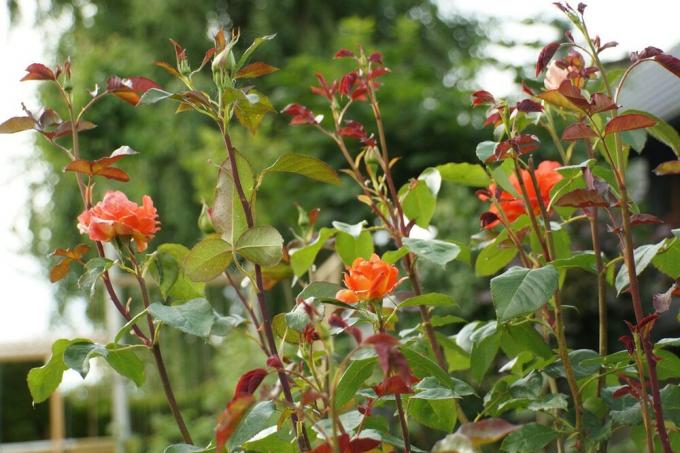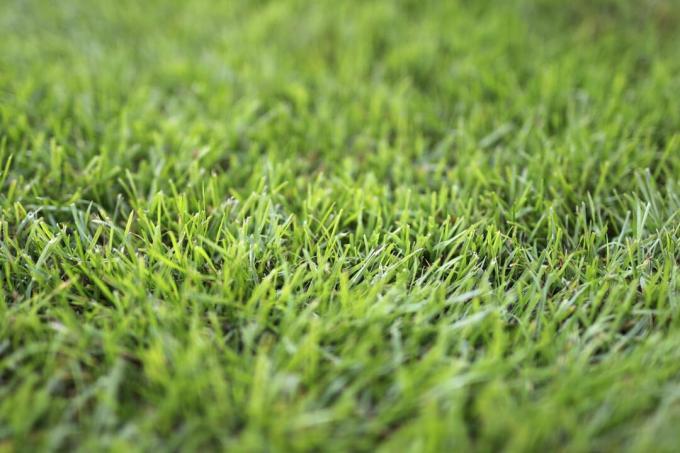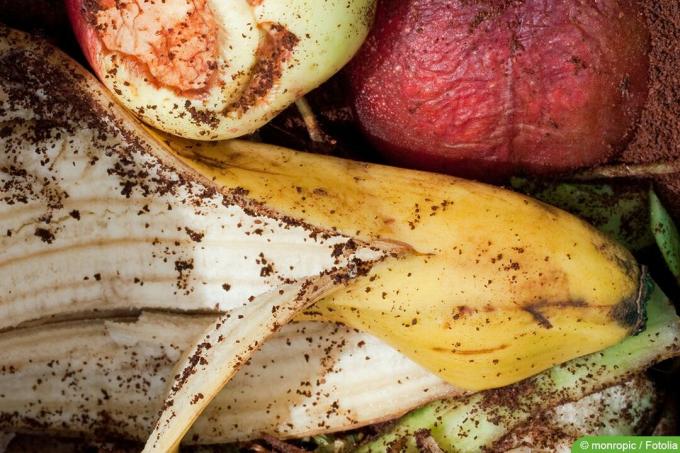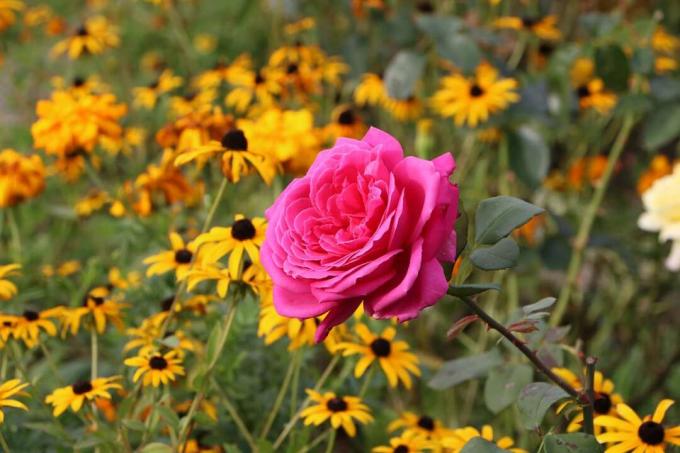

Table of contents
- Product description
- manufacturing
- ingredients
- Purpose of use
- Effect
- Lawn
- roses
- dose and application
- deploy
- roses
- Lawn
- Buy
Rock dust is often associated with fertilizers, although it is not actually a fertilizer. But it is still very valuable for your roses and lawn, so regular application will bring you visible benefits. Below you will find everything you need to know about this substance, as well as detailed expert instructions on how to apply it correctly to lawns and roses.
Product description
Rock dust is a ground material that is also available as this in gardening shops. It is sold as a small-grain product, which usually has a grain size of around 0.063 millimeters and therefore has a floury consistency, from which the name is derived.
The primary rock flour is not available as a classic fertilizer, but is one of the soil additives.
manufacturing
Primary rock flour is usually obtained from the outlets of glaciers or volcanoes. The latter consists of a particularly large number of different minerals. A special process with high energy consumption breaks the rock into small pieces. This is followed by grinding in a so-called stone mill during production, where the end product is a fine powder is produced and any coarse particles that may be present are sorted out by sieving become.
ingredients
It is usually made from basalt and/or lava stone. Diabase, quartz as well as zeolite and phonolite can also be considered starting materials. Granite is rarely used. Exactly which components are present in the rock flour depends on which starting product it is. These, in turn, also influence the respective product properties and are suitable for different areas of application. Higher iron compounds can be found, for example, in lava flour than in basalt or diabase rock flour.
However, it mostly consists of silicic acid, which usually accounts for around 80 percent of the substances it contains. Eight to 35 percent is usually covered by aluminum oxide and other minerals as well as trace elements, of which the following are the most important in addition to iron and silicic acid:
- magnesium
- calcium
- potassium
- molybdenum
- manganese
Main nutrients, on the other hand, are only minimal or not included at all, which is why this plant product does not belong to the range of conventional fertilizers.
Purpose of use

While classic fertilizers primarily have a direct effect on the plant and provide an additional supply of nutrients, rock flour is purely aimed at soil quality. Here they are able to improve/optimize them by enriching the soil with mineral trace elements. Depending on the starting product, it is also used to increase the soil's nutrient storage. Rock flour can have a higher lime content and thus neutralize acidic soils. However, an increased lime content is less suitable for use on lawns or roses.
In humid regions of the earth, on the other hand, lava and basalt flour have a positive effect on the storage capacity of nutrients and the formation of humus. It is mainly used by hobby gardeners who fertilize ecologically with plant manure. By adding rock dust, the otherwise strong odor is softened, which is particularly advantageous for vegetable beds near houses or outdoor seating areas.
Effect
The effects of rock dust applied to the lawn or rose bed will only show over time if it is used regularly over a period of time. Occasional spreading of the primary rock powder on the soil of lawns or roses will have no visible effect. When using it on lawns and in rose beds, it should be taken into account that there are sometimes different requirements. For this reason, there are special rock flour products for lawns and for roses a conventional rock flour plant product can be used for particularly sensitive flowers. Once long-term effectiveness has been achieved, this ends approximately three years after the last application.
Tip:
Apply rock dust to the rose bed and/or lawn at least once a year. This is enough to extend the duration of action by a whole year again and again, provided that a sufficiently high dose is chosen.
Lawn
The components of a rock flour decompose in a slow way and thus become available to plants just as slowly. In the case of lawns, the effect manifests itself in dense and vigorous growth as well as a rich green color of the grass. As a result, weeds have fewer and fewer chances of spreading through the lawn. Iron and magnesium, for example, minimize moss growth in the lawn.
roses
In the case of roses, the primary rock powder helps to increase resilience and makes them more resistant to diseases. It also protects roses from parasites. In the case of an existing pest infestation, it reduces parasite activity and helps to increase the chance of recovery in the event of illness. The improved soil quality stimulates growth and ideally extends the flowering period.
Tip:
The finer the primary rock powder is ground, the faster it will take effect, because the smallest particles can get into the soil faster and have a correspondingly faster effect. When buying, always pay attention to a high degree of fineness.
dose and application
Primary rock flours are usually administered from spring to autumn. In order to continuously improve the soil quality and the supply of minerals and trace elements, it should be Apply small amounts to lawns and rose beds every four weeks throughout spring. The best start is before the fertilizer season, because the ingredients of fertilizers can be stored better in the same year thanks to the flour and its effect.
An oversupply is not to be feared. The dose recommended by the manufacturer varies depending on the product. You can use this as a guide. A dose of up to 150 grams per square meter is usual on calcareous soils. For acidic soils, the usual dose is usually between 200 grams and 300 grams. Heavy consumers such as roses and lawns tolerate maximum doses.

If there is an acute case of deficiency symptoms, weeds, pests or fungal diseases, the dose should be increased and the doses increased to once a day. It must be administered in combination with plenty of water, since rock flour depends on this for its decomposition, which must take place before it can spread its effects.
deploy
When it comes to distributing bedrock dust, you have a number of options to choose from for roses and lawns:
roses
- Scatter the flour over the bed and the roses by hand - recommended in the event of pest infestation or as a preventive measure
- Mix with water and add to the soil as irrigation water - also suitable for spraying in case of pest infestation
- When planting, spread the soil well with compost if necessary
- Spread flour on the soil around the rose and pour to soak it in
- It can be added when making other organic fertilizers such as nettle manure
Lawn
- Cut and scarify the lawn before application
- Distribute the rock flour evenly over the lawn care by hand or with the fertilizer wagon
- Then water the lawn – this can be dispensed with if rain is imminent
- Distribute with the lawn seed on the surface of the earth
- Work into the upper soil area before laying out the turf
Buy
Countless different rock powder products are available in specialist shops. It is often not easy to make the right decision. Basically, as already mentioned, only use rock flour that is especially suitable for lawns and for roses products for sensitive plants. Most types of roses are sensitive to lime, so you should pay attention to a low calcium content when buying them. The prices can vary greatly. A price comparison may be worthwhile here, because despite a possibly large price difference, you can very well the same ingredients in a similar composition can be found in products of different price ranges.
You can use one euro per kilogram as a guide. The rock powder is available in 2.5, 5 and 10 kilogram bags/packages. However, lava rock flour is usually a bit expensive. But it is worth paying more for the lawn in particular, as it has one of the highest iron contents and is therefore ideal for the requirements of a well-groomed lawn.
 garden editorial
garden editorial I write about everything that interests me in my garden.
Learn more about fertilizing

Make effective nitrogen fertilizers yourself lawn fertilizer
In order to develop optimally, plants need sufficient nutrients. For example, nitrogen, one of the main nutrients, is indispensable. If this is not present in sufficient quantities in the soil, satisfactory growth cannot take place. As a result, it must be delivered.

Dried banana peel as fertilizer | Application tips
Bananas are popular and healthy. The banana peel usually ends up in the trash. But it is far too good for that, because the dried shells are an excellent fertilizer for a variety of garden plants.

Horn meal: with fertilizer against clover in the lawn | 7 tips
In the lawn, clover is usually undesirable. With too little fertilization, however, it spreads quickly. Horn meal can help as a biological fertilizer. See this article for tips on how to use it.

Unusual Fertilizers | 13 home remedies that can do more
Much of what accumulates in the household and usually ends up in the organic waste bin can be used to fertilize garden and/or indoor plants. They offer an ecological alternative to mineral fertilizers and score with environmental compatibility and sustainability.

Fertilizer for roses: 15 home remedies for fertilizing roses
In addition to rose fertilizer, numerous home remedies are also suitable as nutrient suppliers for roses. We present the most popular ones in this article!

Fertilize properly | What good is low-nitrogen fertilizer?
No plant can survive without nutrients. Only with optimal and needs-based care can they develop magnificently, bloom lavishly and bring rich harvests. As a result, fertilizer plays an important role in care, provided the ingredients and dosage are right.



